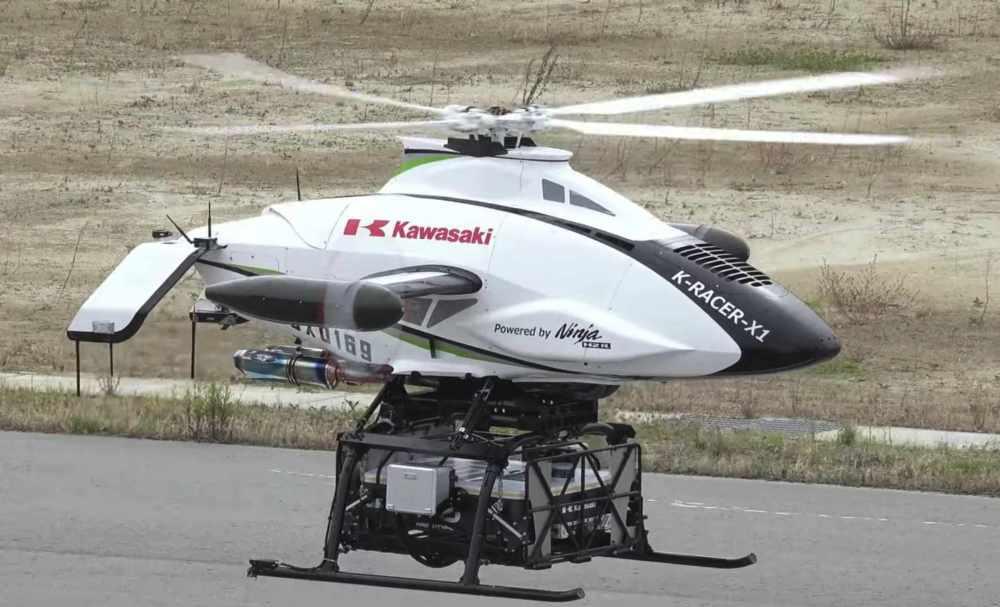Kawasaki crams the 1000cc supercharged engine on his wild H2R supercycler into a heavy autonomous cargo helicopter. Now the company has demonstrated a robotic system capable of loading and unloading the engine. It is reported that the K-Racer X1 is a drone beast, about the size of a small car.

It rises vertically on a helicopter-style top rotor, but typically there is also a tail rotor to balance the torque, and the machine uses two forward-facing propellers mounted at the ends of the short wings. These propellers serve as power to push forward, while the wings provide some lift.
Kawasaki hasn't announced how fast the thing will fly, but it's expected to be fast. Also, assuming that the top rotor remains rotating during cruising flight, the top speed will be limited by the stall of the receding rotor, which will lead to asymmetrical lift. The motor can produce more than 300 horsepower.
In a video released earlier this month, Kawasaki showed the K-Racer prototype flying, in addition to testing an autonomous delivery robot. Currently, these robots are relatively small and rudimentary, they are loaded by hand, then rolled up the ramp and sat in cages under the drone. But Kawasaki is working on larger rolling modules that can still be integrated with other robotic systems in factories and delivery centers, which would mean that the process will eventually be completely autonomous.
Automation is a key challenge for Japan, which is facing a declining population that is aging faster than anywhere else on the planet. It is estimated that 38% of the country's population was over the age of 60 in 2014, and this proportion will increase in the coming decades. This means that robots will need to step in and take over a lot of busy work, and fully autonomous systems like K-Racer that can handle short- and medium-range logistics operations may have a significant future.
Of course, before the skies are filled with these machines, aviation authorities will need to give the green light for autonomous flight, and the next generation of autonomous airspace management will need to prevent things from colliding with each other.